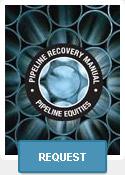Pipeline Equities
PO Box 571977
Houston, Texas 77257
Phone: 713-623-0690
Pipeline Recovery
excavation & removal
Damage Assessment
of easements
Pipeline Appraisal
pipeline property valuation
Pipeline Equities
PO Box 571977
Houston, Texas 77257
Phone: 713-623-0690
excavation & removal
of easements
pipeline property valuation
This article is included in this appraisal handbook to indicate the value of secondary pipe so that the appraiser does not use the term “salvage” to mean junk or scrap.
When we think of pipe that has been buried in the ground for ten, twenty or seventy or eighty years we think of corrosion, rust, and deterioration. That might be true in some cases, but if a pipeline has been laid properly, it can be in as good a condition as when it was rolled off of a steel mill rack. The key is in installation, care, maintenance and in some cases the product that has moved through the line at one time or another. Structural steel pipe is simply steel in a tubular form. The outside diameter can be from 1/4″ to 72″ and beyond. The wall of the pipe can be of virtually any thickness. The pipe is made either by rolling flat plate and then welding the seam or hollowing out a round piece of steel to make a seamless variety of pipe.
Structural usage means to use in structural methods to construct or use in the process of building or using the material for an integral purpose in the construction or structural building of something entirely different.
Almost anything that might need shoring up or strengthening can use steel pipe to lend support. These might be building foundations, bridge and highway support and highway construction. The Chinese purchased and used hundreds of thousands of tons of tubular steel or used line pipe in the initial building stages of the highway construction in that country.
There are several sources of structural secondary or used pipe. An important source is new manufactured structural pipe made specifically for a purpose. In this case, secondary or used pipe cannot work, as very controlled engineering must prevail. Example: the launch pad at Kennedy center or a new suspension bridge.
Sources for secondary pipe are:
Starting in the mid 1980’s, Pipeline Equities began soliciting pipeline companies directly to purchase their “out of use, uneconomic, idled, and abandoned pipelines” for reclaiming and recovery and reuse in the structural market. This began a mini industry now made up of less than twenty companies that directly solicit these companies for that purpose.
One of the most common uses for steel structural pipe is in the piling industry. In this case the steel piles or pipe is driven into the ground, river bottom or ocean floor in order to bulkhead the shore line, form a foundation, or create a dock or facility from which to create stability. Through the use of the large piling hammers, the pipe is driven or hammered to give strength or prevent erosion.
Other uses are as follows:
We have seen heavy wall 8″ used to build elephant fences, large diameter line pipe used to make pontoons for boats, and oil line converted to electrical conduit and fiber optic use.
In the early nineteen twenties, an eight inch line was laid near Cushing, Oklahoma to transport oil from a gushing flush producing oil well to a tank farm near Drumwright, Oklahoma. The wells in that field produced for several years and was taken up and moved to the great oil fields near Crane and McCamey, Texas in the Texas Permian Basin. The line was active there for many years and shut in about 2005. Pipeline Equities bought the line and removed it in 2008. Part of this line went to Viet Nam where it is used currently as a water line serving parts of a suburb of Danang and another 100,000′ went to Mexico to be used as a line to move slurry from a copper mine.
The cases of Mexico and Viet Nam are a little out of the norm. the reality is this pipe and steel is in good shape and have more lives to live. We have taken up many hundreds of thousands of feet of pipe, machine cleaned the exterior, beveled the ends, straightened the pipe when needed and recoated the exterior. All that is left to do is deliver the pipe to the next job site. This can be 6″, 8″, 10″ or any size suitable for gathering, trunk or transmission pipeline work.
Most all of the pipe mentioned above will eventually find it’s way back to a scrap yard, the last resort for tubular steel. But there it is sorted, prepared and shipped back to the furnaces to be checked for chemical contents, reconstituted to the proper yield and strength via additions of proper additives to once again go back to use as plate or tubular steel.

Fill out the short form below to receive our Pipeline Recovery Manual.
Sign up for our free newsletter to receive your complimentary copy of our Pipeline Recovery Manual that explains our entire process for recovering or salvaging idled or abandoned pipelines.
You will see how we deal with landowners regarding notification and recordings. How to draft a contract of sale with models by: Exxon, Texaco, Koch and others and pictures showing actual work in process.
The manual shows Pipeline Equities job references, right of way releases, agreements and the history and background of Pipeline Equities and managing partner David Howell. These references touch on parts of the six million feet of line removed or handled by the company over the past twenty years.
A line pipe table describing various weights, grades, and pressure ratings of ERW and seamless line pipe is included. This section is an indispensable tool for anyone doing operational word with line pipe.
Also included are extensive glossaries of pipe, pipeline, and right of way terms.

Request a complimentary Pipeline Appraisal Handbook
Fill out this short form and you will be sent a confirmation link to our Newsletter. Once you click the link you will be subscribed to our newsletter and taken to a page where you can download the Pipeline Appraisal Handbook.
This handbook written by David Howell, managing partner of Pipeline Equities is the basic text of any pipeline valuation. All of the essential factors for establishing the value of a pipeline are discussed along with exclusive proprietary formulas and tables essential to a certified appraisal.
Also included are 32 pages of pipe weight and grades tables that cover virtually any situation which might be encountered regarding line pipe requirements. Additionally you’ll find an extensive glossary of pipe, pipeline and right of way terminology is part of the Handbook.
Subjects include: Replacement, Right of Way, Surface Inventory, Throughput, Salvage/Recovery, and comparable sales histories to name a few of the basic factors of pipeline appraisal.
The author recognized a need for a report or “how to” manual for properly appraising pipelines and pipeline right of ways. Currently the work is being done by accounting firms, engineers, and real estate appraisers.
Howell has forty-five years experience in many sectors of the petroleum industry from drilling contractor and oil and gas operator to pipe and supply distribution throughout the world. He has published Tradex Equipment magazine, the Whole World Oil Directory, and the Texas Oil Register.
For the past twenty years, Howell has been almost exclusively engaged in pipeline sales and acquisition, appraisal, removal for salvage, environmental remediation and general pipeline operations.
Howell currently serves on board of the Pipeline Appraisal Institute and is a member of the International Right of Way Association. Howell is a graduate of Texas A&M University – Kingsville and a native of Alice, Texas. He is currently residing in Houston and is the managing partner of Pipeline Equities.